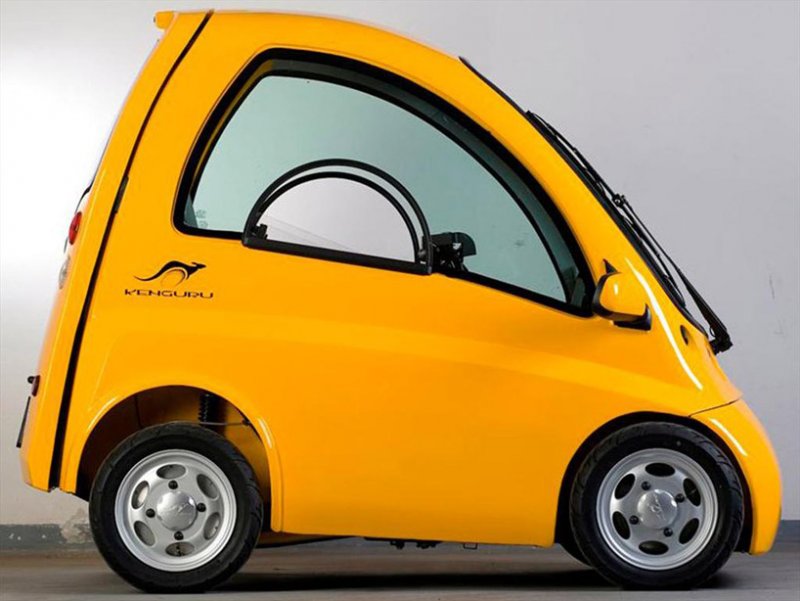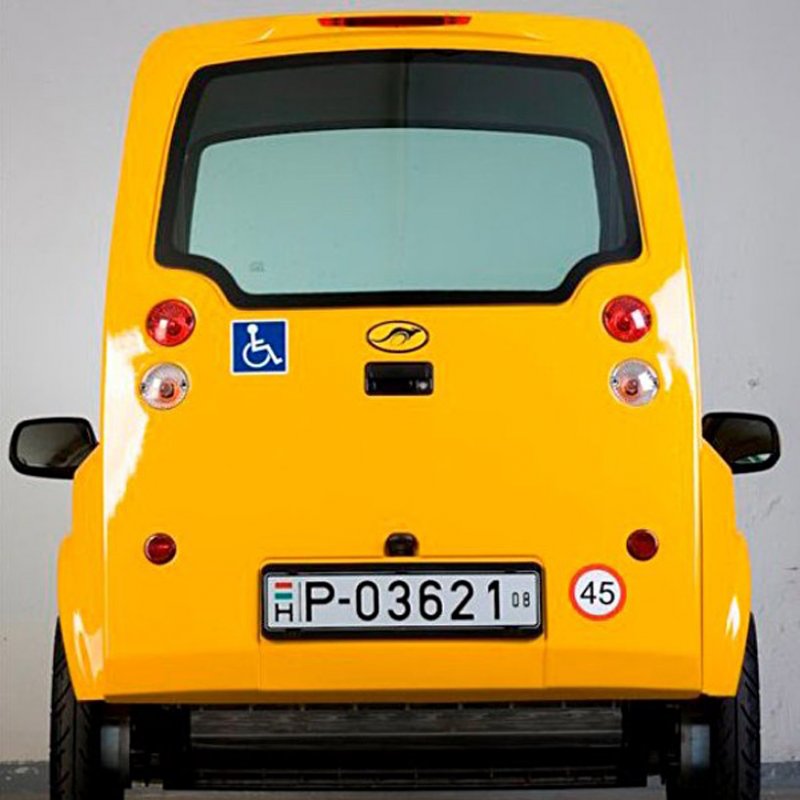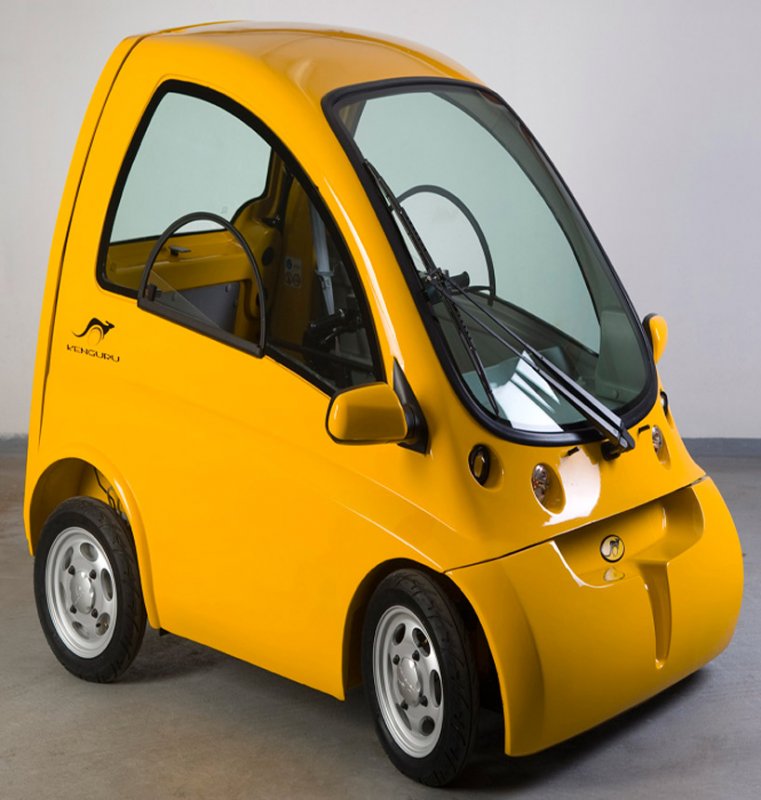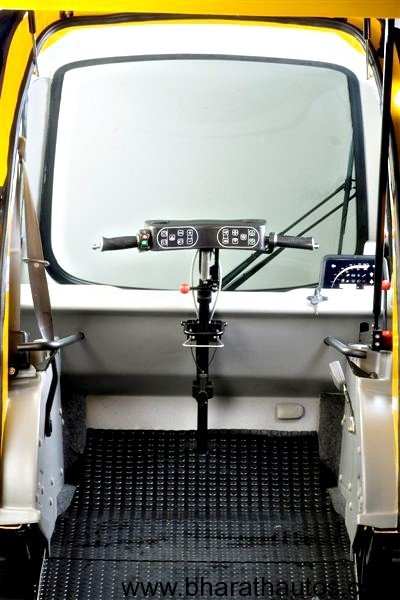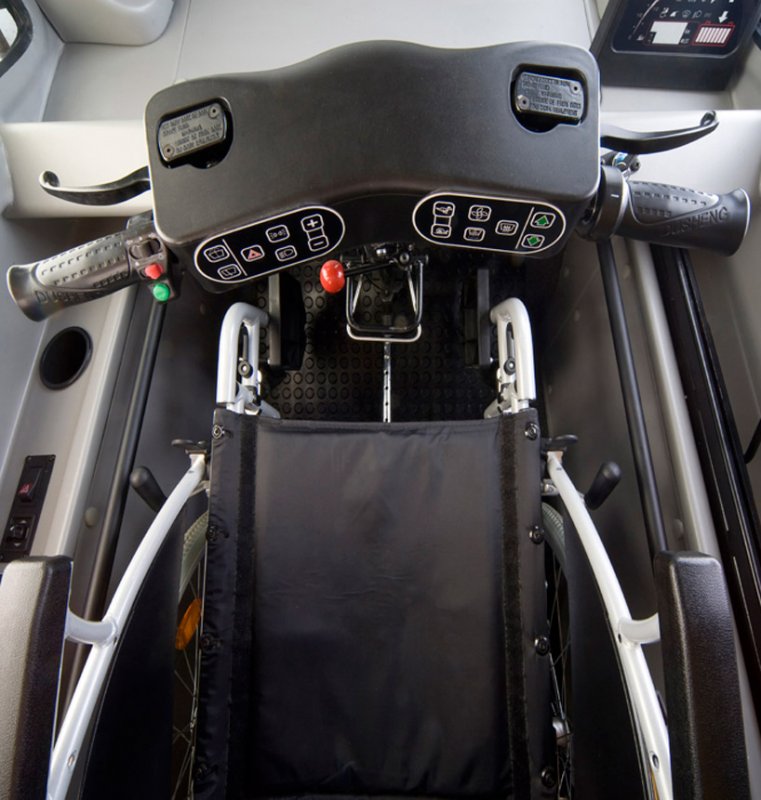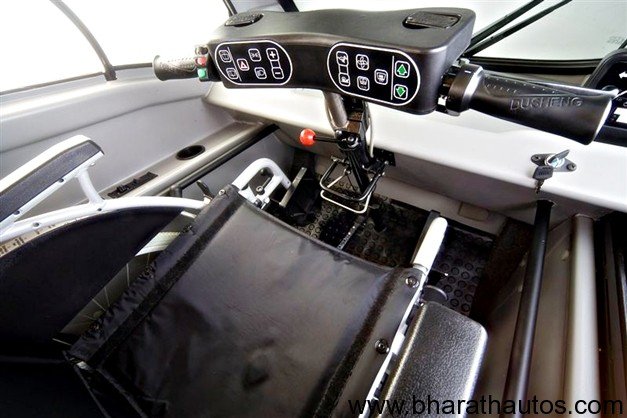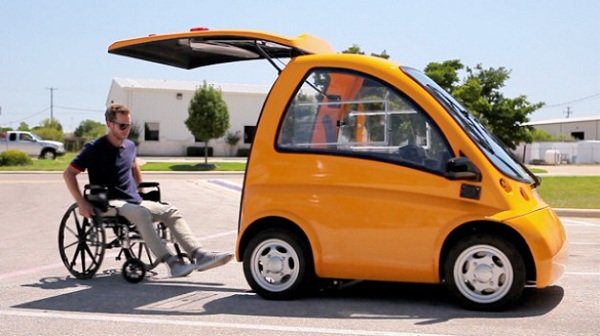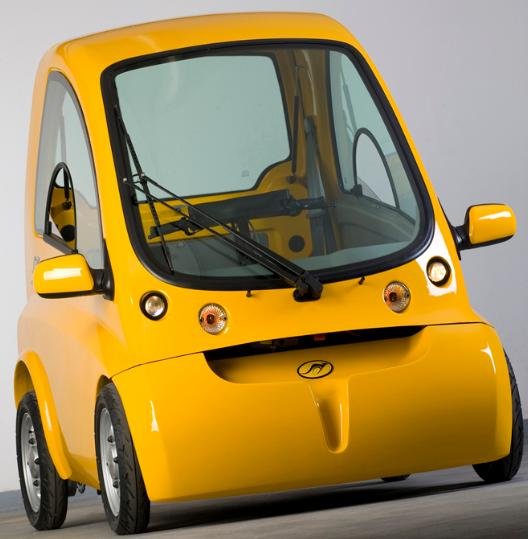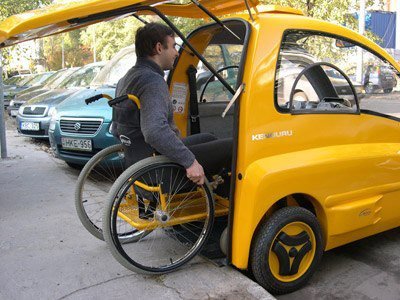Thread Starter
#1
Design, power, speed, efficiency, and emissions are often a focal point of the development of a car. However, what about the ease and convenience for drivers who use wheelchairs?
If you get around in a wheelchair, you often find yourself depending on friends and family for the simplest errands—a trip to the doctor's office, an outing to the movies, even just picking up milk. Stacy Zoern, a former patent lawyer turned car manufacturer, has been in a wheelchair her whole life and understands what a hassle finding transportation can be.
"Transportation is a huge obstacle and it doesn’t need to be," says Zoern. "When you create a solution for that, the whole world just opens up."
"I’m in my thirties and my friends have to take me everywhere. Any time I’m invited to anything, the next thing is, ‘Well, can you come pick me up?’" Zoern says. "It’s like I’m 15 all over again."
Reduced to constantly groveling for rides, Zoern was on the look-out for alternatives. Kenguru electric car developed in Hungary and to stagnate due to the economic crisis. When she found Kenguru—a then-Hungarian made single passenger, electric vehicle—she was hooked. Here’s the catch: the car’s creators couldn’t afford to take the car to market. So Zoern gathered angel investors, purchased Kenguru’s assets and started her own manufacturing company, Community Cars, in Pflugerville, Texas.
The Kenguru EV is a vehicle purposely designed to fit one person in a wheelchair snugly inside – it also looks rather cute and funky as well. The model isn’t currently in production, with its American and Hungarian parents not having the necessary funds to do so. That’s why their site has no ‘Buy’ option for the Kanguru, instead having an ‘Investors Wanted’ banner.
The Kenguru electric car is unlike any other EV, if for no other reason than it doesn't have a seat. That's because the Kenguru is designed to be driven by people in wheelchairs, and they bring their seats with them. With the Kenguru, you roll up, open the one door (the back hatch), then roll on down the road.
These cars use rear-wheel drive system drive (RWD) with two powerful 2 kW electric motor capable of pushing the vehicle up to a maximum speed of 45 km / h. Mileage of the car weighs 550 kg are in the range 70 to 110 km with the process of charging the battery for 8 hours.
Unlike the cars in general are using the steering wheel and pedals, steering tools like bajaj Kenguru to support the driver with leg muscle dysfunction. Zoern Stacy, CEO of Community Cars, said that they are developing steering joystick.
It’s not quite highway ready though. Because it adheres to guidelines for low-speed electric vehicles, the Kenguru maxes out at 25 miles per hour. The current model is designed for a manual wheelchair, but the next, joystick operated model will be power wheelchair-ready—development costs for it are being crowd-funded through RocketHub.
Zoern, who uses a power chair, is still waiting for the new model to drive the Kenguru herself, but she is proud to build a vehicle that will let people find independence in their everyday lives.
It is expected to cost somewhere in the region of €20,000 (INR 14lakh approx.), which is extremely steep considering it’s not a particularly advanced piece of transportation tech
If they find investors, they should reduce the price considerably before launching it, because at the expected price level, it’s far far too expensive for what it is. No matter how admirable the intention, people with disabilities really don’t want to pay that much for something which, if it weren’t sold and marketed for them, would be much cheaper. Oh, it also looks exactly like a big piece of cheese
Details about the car.
Passengers: 1
Grub Weight: 460 kg
Length :2150 mm
Width :1360 mm
Heigth : 1570 mm
Gvw :560 kg
Rang-up to :50km
Top speed :40km/h
Technical specifications
If you get around in a wheelchair, you often find yourself depending on friends and family for the simplest errands—a trip to the doctor's office, an outing to the movies, even just picking up milk. Stacy Zoern, a former patent lawyer turned car manufacturer, has been in a wheelchair her whole life and understands what a hassle finding transportation can be.
"Transportation is a huge obstacle and it doesn’t need to be," says Zoern. "When you create a solution for that, the whole world just opens up."
"I’m in my thirties and my friends have to take me everywhere. Any time I’m invited to anything, the next thing is, ‘Well, can you come pick me up?’" Zoern says. "It’s like I’m 15 all over again."
Reduced to constantly groveling for rides, Zoern was on the look-out for alternatives. Kenguru electric car developed in Hungary and to stagnate due to the economic crisis. When she found Kenguru—a then-Hungarian made single passenger, electric vehicle—she was hooked. Here’s the catch: the car’s creators couldn’t afford to take the car to market. So Zoern gathered angel investors, purchased Kenguru’s assets and started her own manufacturing company, Community Cars, in Pflugerville, Texas.
The Kenguru EV is a vehicle purposely designed to fit one person in a wheelchair snugly inside – it also looks rather cute and funky as well. The model isn’t currently in production, with its American and Hungarian parents not having the necessary funds to do so. That’s why their site has no ‘Buy’ option for the Kanguru, instead having an ‘Investors Wanted’ banner.
The Kenguru electric car is unlike any other EV, if for no other reason than it doesn't have a seat. That's because the Kenguru is designed to be driven by people in wheelchairs, and they bring their seats with them. With the Kenguru, you roll up, open the one door (the back hatch), then roll on down the road.
These cars use rear-wheel drive system drive (RWD) with two powerful 2 kW electric motor capable of pushing the vehicle up to a maximum speed of 45 km / h. Mileage of the car weighs 550 kg are in the range 70 to 110 km with the process of charging the battery for 8 hours.
Unlike the cars in general are using the steering wheel and pedals, steering tools like bajaj Kenguru to support the driver with leg muscle dysfunction. Zoern Stacy, CEO of Community Cars, said that they are developing steering joystick.
It’s not quite highway ready though. Because it adheres to guidelines for low-speed electric vehicles, the Kenguru maxes out at 25 miles per hour. The current model is designed for a manual wheelchair, but the next, joystick operated model will be power wheelchair-ready—development costs for it are being crowd-funded through RocketHub.
Zoern, who uses a power chair, is still waiting for the new model to drive the Kenguru herself, but she is proud to build a vehicle that will let people find independence in their everyday lives.
It is expected to cost somewhere in the region of €20,000 (INR 14lakh approx.), which is extremely steep considering it’s not a particularly advanced piece of transportation tech
If they find investors, they should reduce the price considerably before launching it, because at the expected price level, it’s far far too expensive for what it is. No matter how admirable the intention, people with disabilities really don’t want to pay that much for something which, if it weren’t sold and marketed for them, would be much cheaper. Oh, it also looks exactly like a big piece of cheese
Details about the car.
Passengers: 1
Grub Weight: 460 kg
Length :2150 mm
Width :1360 mm
Heigth : 1570 mm
Gvw :560 kg
Rang-up to :50km
Top speed :40km/h
Technical specifications
- Number of passengers: 1 (driver)
- Length: 2150 mm; Width (with mirrors): 1350 mm; Height: 1470 mm
- Mass w/o batteries: 288 kg; Mass with batteries: 458 kg; Maximal mass: 575 kg
- Motor Size: 4 kW
- Batteries: 4 main batteries, 1 auxiliary battery
- Charging: 230 V, 50 Hz line power
- Drive: 2 electric motors
- Top Speed: 38 km/h
- Range on a Single Charge: 40-60 km, depending on road- and weather conditions.
- Wheels: 3.00x12 300 kpa
- Color: RAL 1028 yellow
- Driving: Handlebar, instrument switches on the left, accelerator on the right grip.
- Periphery Controls: (lighting, shield sweeping etc.) press-buttons on the side panels of the handlebar.
- Dashboard: LCD display (battery charge, speed, forward/reverse direction, warning and failure messages etc).
- Door-mechanism: remote operated, manual override inside and outside for emergency
Kenguru Wheelchair-Accessible EV: TRANSLOGIC - YouTube
Takes you to work
KENGURU CAR - The kenguru takes you to work - YouTube
Takes you to leisure
KENGURU CAR - The kenguru takes you to leisure - YouTube
Takes you to shop
KENGURU CAR - The kenguru takes you to the shop - YouTube
Takes you out to have fun
KENGURU CAR - The kenguru takes you out to have fun - YouTube
Takes you to school
KENGURU CAR - The kenguru takes you to school - YouTube
Takes you to work
KENGURU CAR - The kenguru takes you to work - YouTube
Takes you to leisure
KENGURU CAR - The kenguru takes you to leisure - YouTube
Takes you to shop
KENGURU CAR - The kenguru takes you to the shop - YouTube
Takes you out to have fun
KENGURU CAR - The kenguru takes you out to have fun - YouTube
Takes you to school
KENGURU CAR - The kenguru takes you to school - YouTube



